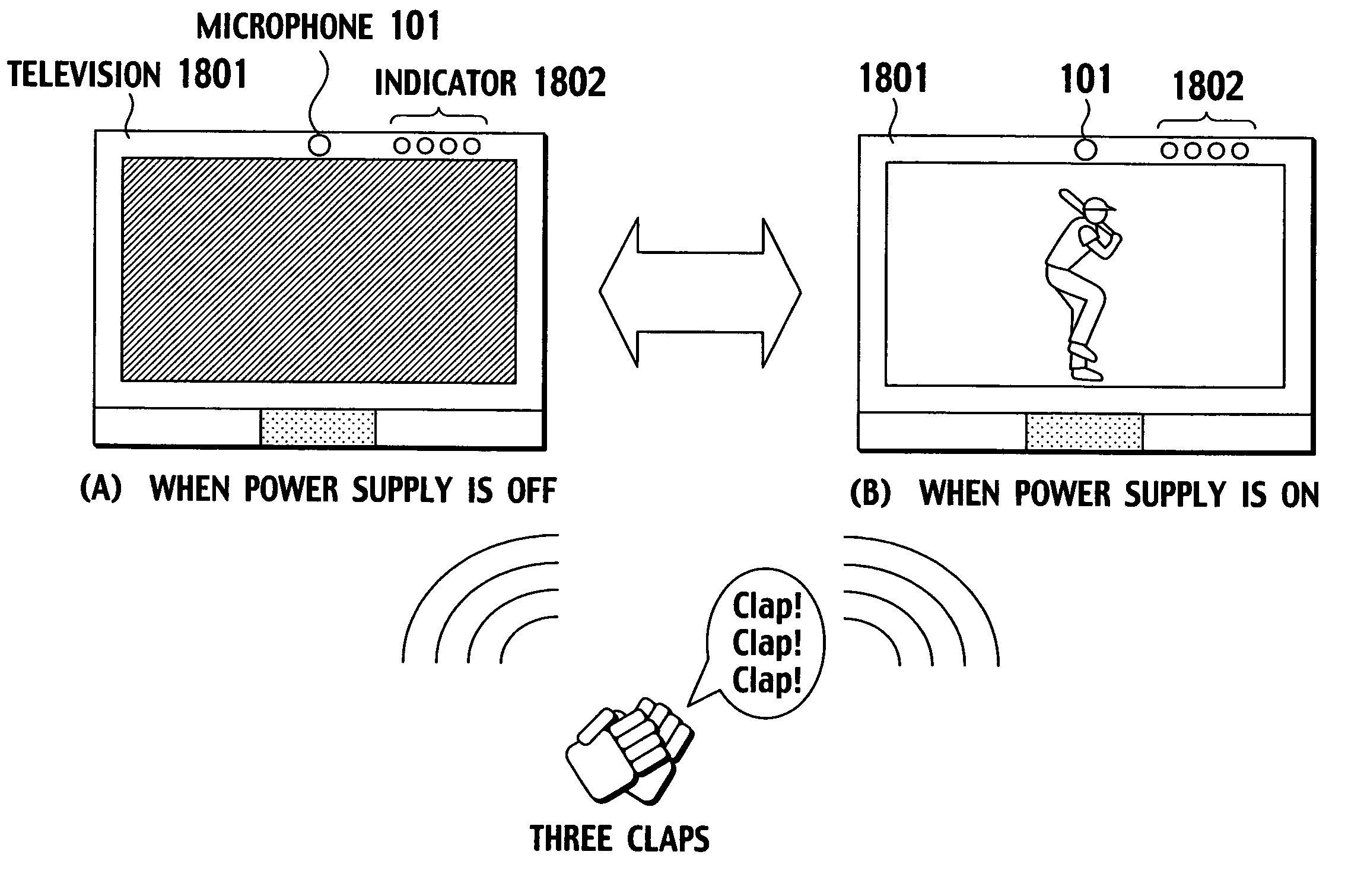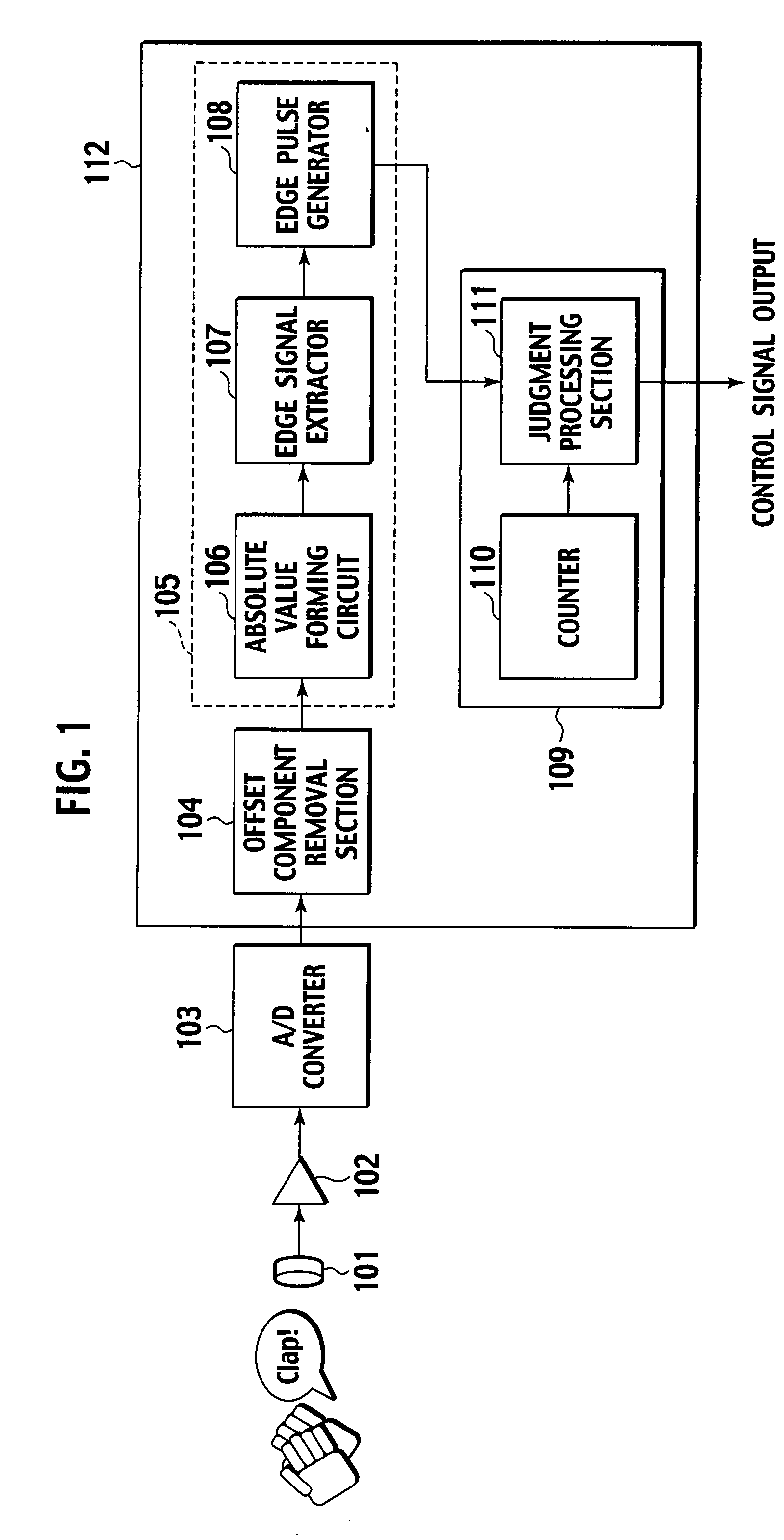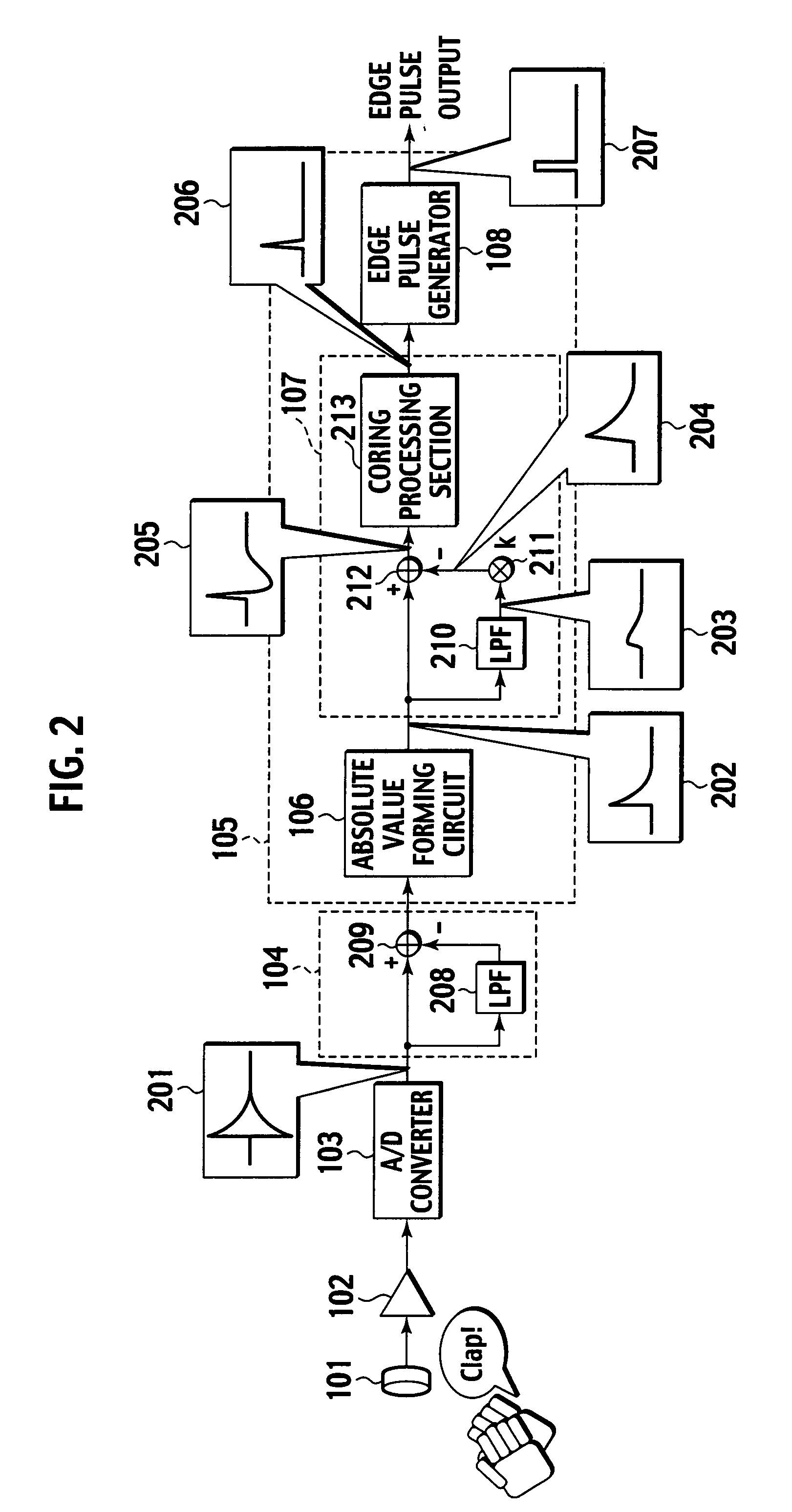Control device for electronic appliance and control method of the electronic appliance
- Summary
- Abstract
- Description
- Claims
- Application Information
AI Technical Summary
Benefits of technology
Problems solved by technology
Method used
Image
Examples
first embodiment
[0050]FIG. 1 is a block diagram showing a first embodiment of a control device for an electronic appliance according to the present invention. The control device for the electronic appliance is disposed in the electronic appliance, and realizes a remote operation of the electronic appliance by an operator. The control device for the electronic appliance of the first embodiment controls the electronic appliance by a series of sound waves (e.g., clapping sounds) which are generated at predetermined time intervals by the operator.
[0051]The control device for the electronic appliance of the first embodiment includes a microphone (hereinafter abbreviated as the MC) 101 which detects operator's clapping sound, an amplifier 102 which amplifies an analog voice signal from the MC 101, an A / D converter 103 which converts the analog voice signal output from the amplifier 102 into a digital signal; and a central processing unit (CPU) 112 which processes the digital voice signal output from the ...
second embodiment
[0122]Next, a second embodiment of the present invention will be described. In a case where clap control of the present invention is performed, when a large noise other than a clapping sound is present at a surrounding area, the clapping sound is buried in the surrounding noise and might not be detected. For example, in a case where music is listened at a high volume, when a sound similar to the clapping sound (in an amplitude value, a frequency band or the like) rings in the music, the sound is recognized as the clapping sound, and an erroneous operation might be caused.
[0123]Here, a state in which there is a possibility that inability to control an electronic appliance by claps or the erroneous operation is caused by such a surrounding sound other than the clapping sound will be referred to as a noise state.
[0124]Here, the second embodiment is constituted so that, in a case where it is judged that a state is the noise state, the control by the claps is prohibited. FIG. 9 shows a b...
fourth embodiment
Third Embodiment, Fourth Embodiment
[0134]Next, third and fourth embodiments of the present invention will be described. It can be said that the edge signal extractor 107 of the first embodiment separates a noise which is a low-frequency component from a clapping sound which is a high-frequency component by use of a low pass filter (LPF), but the third and fourth embodiments are constituted so that an input sound is divided into a plurality of frequency bands, and a necessary component and an unnecessary component are further distinguished from each other.
[0135]Since the clapping sound indicates an impulse waveform, the sound has signal components over almost all of the frequency bands. When the input sound is divided into a plurality of bands with a pass filter by use of this characteristic and the sounds are subjected to clapping sound detection processing as in the first embodiment, the clapping sound can be distinguished from another sound such as a sound which exists in an only ...
PUM
 Login to View More
Login to View More Abstract
Description
Claims
Application Information
 Login to View More
Login to View More - R&D
- Intellectual Property
- Life Sciences
- Materials
- Tech Scout
- Unparalleled Data Quality
- Higher Quality Content
- 60% Fewer Hallucinations
Browse by: Latest US Patents, China's latest patents, Technical Efficacy Thesaurus, Application Domain, Technology Topic, Popular Technical Reports.
© 2025 PatSnap. All rights reserved.Legal|Privacy policy|Modern Slavery Act Transparency Statement|Sitemap|About US| Contact US: help@patsnap.com



